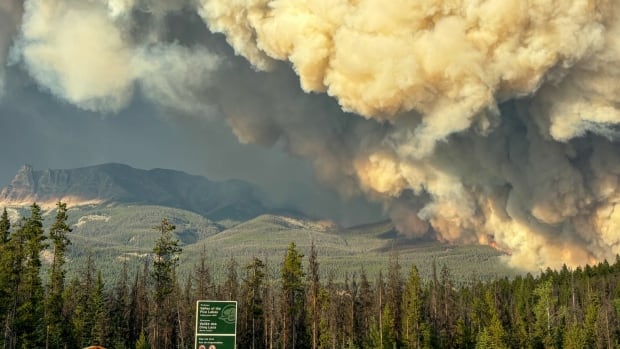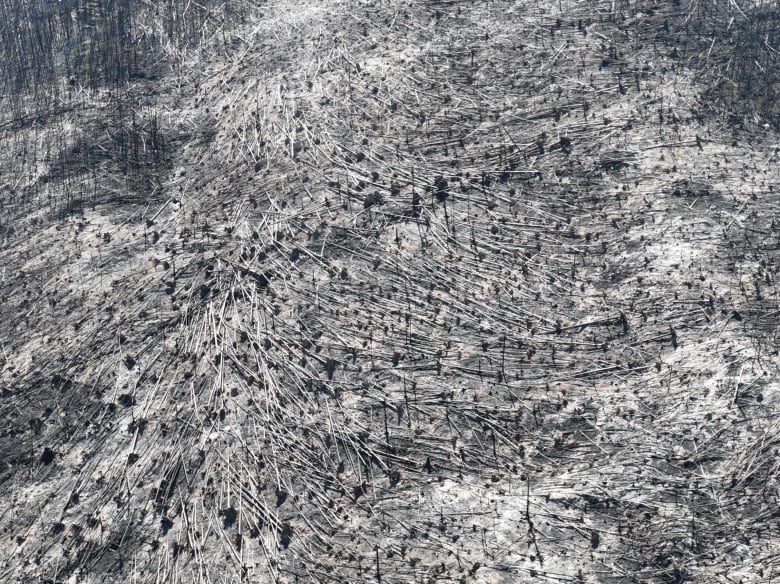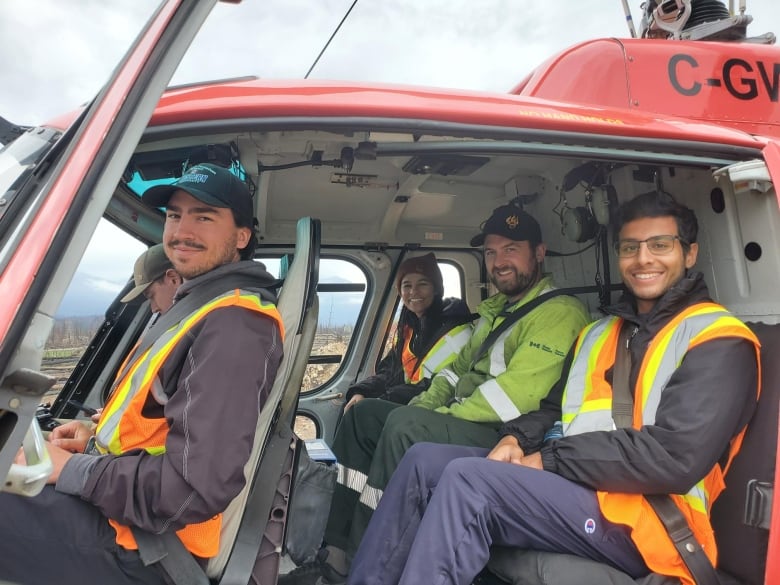
As the recovery continues in Jasper National Park after a devastating wildfire, researchers at Western University are looking into whether some of the damage was caused by another natural phenomenon: tornadoes.
The Northern Tornadoes Project is trying to document every tornado that occurs in Canada, and a team was recently in the national park surveying the destruction to determine whether one or more fire tornadoes touched down.
The wildfire, which is now under control, ultimately burned roughly 33,000 hectares and destroyed approximately 30 per cent of the buildings in the townsite.
“There was evidence that things had been thrown,” said the project’s executive director David Sills, about what led the team to Jasper National Park.
Whole trees had been lofted, he said, and large metal objects were thrown across the river.
“At that point we knew that this is something we needed to investigate. There were obviously extreme winds associated with this fire.”

Could take months to determine
According to the Royal Meteorological Society, fire tornadoes can form from pyrocumulonimbus clouds, which can be created by intense heat from large wildfires and generate their own weather systems.
“It takes a very intense wildfire to begin with to generate a fire tornado,” said Areez Habid, a meteorology student who is working with the project. “And so, it’s not very common, but it is a significant event.”
Sills said it could take the team months to confirm if a tornado did indeed touch down, but he said there are some initial findings from the data collected.
“We know we have a damaged pattern at the surface. It’s showing a rotating column of air. But does that rotating column of air attach to a cloud, right? Is it just part of the fire or is it actually attached to a cloud above?” he said, saying that the latter would qualify as a tornado.

During their visit in mid-September, the team captured drone video of the damage, investigated tree damage firsthand and documented debris.
“We can use engineering analysis on some of the debris that was lofted,” said engineer Aaron Jaffe.
“We can look at the tree directions and do a detailed study there, and we can try to get actual wind speeds from that and equate them to what level of tornado or downburst or severe wind event might have caused that damage.”
‘An entirely different class of tornadoes’
A fire tornado that touched down during a wildfire in Gun Lake, B.C., was Canada’s first recorded one, and one of few recorded worldwide.
Having a second such tornado recorded would be significant.
“It’s really something new. It’s really on the cutting edge.… This is an entirely different class of tornadoes that are being generated by fires,” Sills said.
And there appears to be urgency around learning more about fire tornadoes, such as where and when they could occur, as Canada could face more intense wildfires with the changing climate.
“This is a serious issue because we know more fires are occurring,” said Sills. “We really need to be aware of the risks that these intense fires pose when it comes to wind.”
The group is also looking at whether wildfire smoke cuts down on the number of tornadoes that are produced every year, saying wildfire smoke drifting across the country could cut down on sunshine and thereby, the ability for tornadoes to be generated.